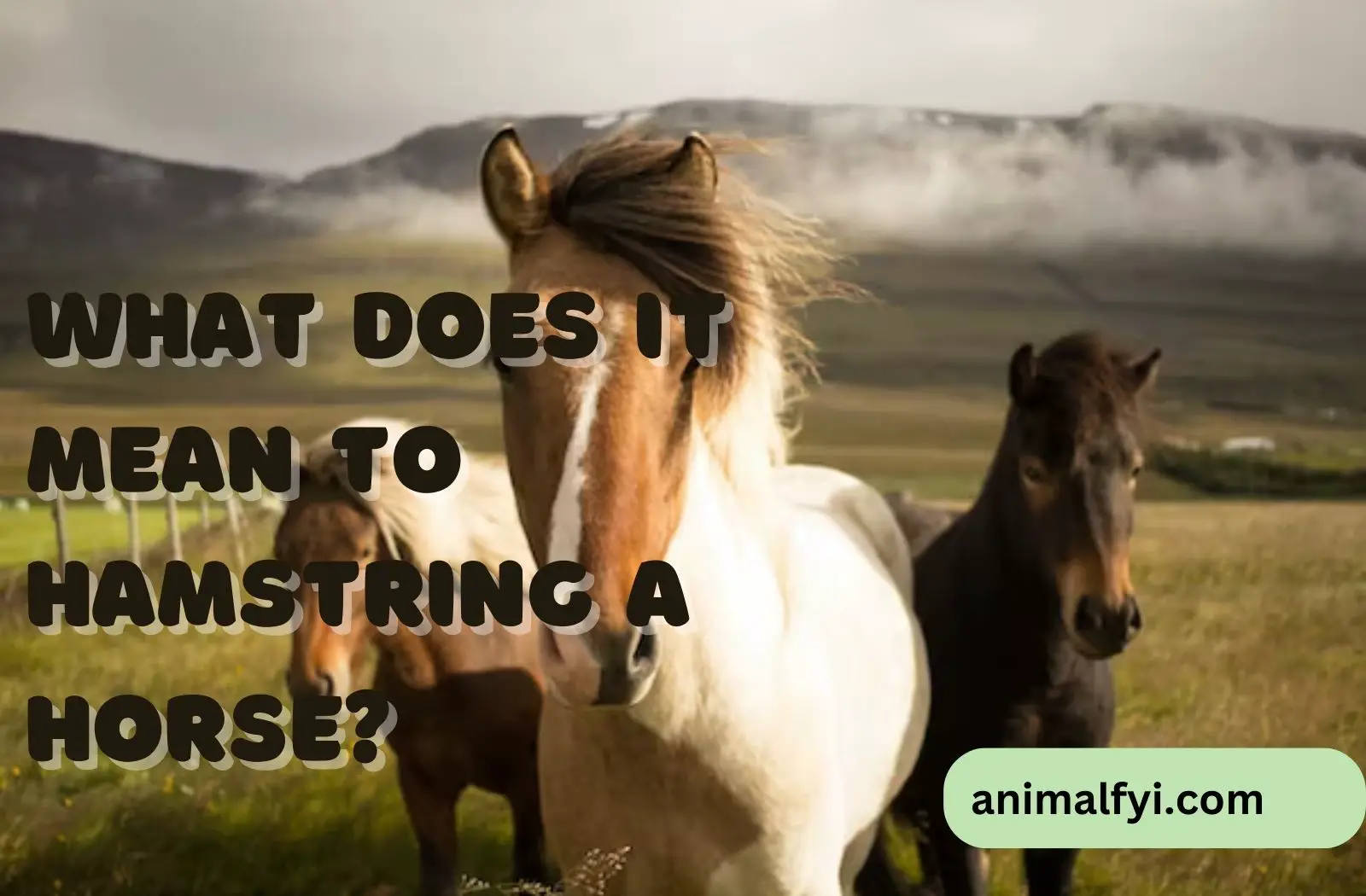When discussing equine-related terms, one that may raise concerns and curiosity is “hamstringing” a horse. Hamstringing refers to an act that involves disabling or damaging a horse’s hamstring muscles, primarily located in the hind legs. In this comprehensive guide, we will explore the meaning of hamstringing horses, its historical context, and the consequences associated with this practice. It is crucial to understand the significance of hamstringing to ensure the welfare and well-being of our equine companions.
Definition and Origins of Hamstringing
Hamstringing involves the deliberate act of disabling a horse’s hind legs by damaging or severing the hamstring tendons or muscles. The term has its origins in historical practices, primarily associated with warfare, punishment, or sabotage. In certain contexts, hamstringing was used to render horses incapable of movement, making them unable to perform their intended tasks effectively.
Methods of Hamstringing
Throughout history, various methods were employed to hamstring horses. These methods often involved cutting or severing the hamstring tendons or muscles in the thigh area. Unfortunately, many of these practices were cruel and caused immense suffering to the horses involved. The consequences of hamstringing were severe, leaving the horse in extreme pain, permanently disabled, and often resulting in euthanasia.
Motives and Context
The motives behind hamstringing horses varied depending on the historical and cultural context. In warfare, hamstringing horses aimed to disable cavalry mounts, rendering them ineffective in battle. As a punishment, hamstringing was inflicted as a cruel form of retribution or as a deterrent for theft or disobedience. In some cases, hamstringing was an act of sabotage, preventing horses from fulfilling their intended tasks.
Legal and Ethical Perspectives
In modern times, hamstringing horses is widely considered illegal and highly unethical. Animal welfare laws protect horses from intentional harm, and hamstringing falls under acts of cruelty. The practice is rightly condemned due to the significant suffering inflicted upon the animals involved. The ethical considerations surrounding hamstringing revolve around the principle of treating animals with compassion and respect, promoting their well-being and freedom from unnecessary harm.
Modern Interpretations and Practices
In contemporary equine contexts, the term “hamstringing” is used differently. Rehabilitation and medical procedures may involve hamstring muscles in horses, but these procedures focus on healing and strengthening rather than causing harm. The modern interpretation of hamstringing aligns with responsible horsemanship, veterinary care, and promoting the well-being of horses.
Promoting Equine Welfare

To ensure the welfare of horses, it is essential to advocate for responsible horsemanship, education, and awareness. Treating horses with kindness and compassion should be the guiding principle in all equine-related practices. By understanding the historical context of hamstringing and the severe consequences it inflicts on horses, we can strive to promote responsible and humane treatment of these magnificent animals.
What does it mean that David hamstrung horses?
The phrase “David hamstrung horses” refers to an event recorded in the Bible, specifically in 2 Samuel 8:4. According to the biblical account, after David’s victory over the Arameans, he captured a significant number of their horses. As an act of military strategy and to prevent the Arameans from using the horses against him in future battles, David ordered his men to hamstrung the captured horses. Hamstringing involved cutting or severing the hamstring tendons or muscles in the horses’ hind legs, rendering them permanently disabled and unable to be used effectively in warfare.
Will a hamstrung horse heal?
In most cases, a hamstrung horse will not heal from the damage inflicted on its hamstring tendons or muscles. Hamstringing is a severe and irreversible injury that causes immense pain and permanent disability. Cutting or severing the hamstring tendons or muscles significantly impairs the horse’s ability to walk, run, or perform any physical activities that require hind leg movement. Due to the severity of the injury, a hamstrung horse typically requires euthanasia to prevent further suffering.
What does it mean to hamstring an animal?
To hamstring an animal means to disable or damage its hamstring muscles or tendons deliberately. This act involves cutting or severing the hamstring tendons or muscles, usually in the hind legs. Hamstringing is often done to render the animal incapable of movement, primarily for reasons such as punishment, sabotage, or to disable the animal’s ability to perform certain tasks effectively. It is important to note that hamstringing is widely considered illegal, unethical, and cruel in modern times, with strong animal welfare laws protecting animals from intentional harm.
How did the Israelites hamstring horses?
In the historical context of warfare during biblical times, hamstringing horses was sometimes employed as a military strategy. The mention of the Israelites hamstringing horses is found in Joshua 11:6, which describes a battle between the Israelites and various Canaanite armies. In this particular account, Joshua and the Israelites, under divine instruction, disabled the enemy horses by cutting or severing their hamstring tendons or muscles. The purpose was to cripple the enemy’s cavalry, rendering their horses ineffective in battle. It is important to understand that these historical practices are not reflective of contemporary attitudes towards animal welfare and are not condoned or practiced in modern times.
Read: How Big is a Horse’s Brain?
Read: Can Horses Eat Blueberries?
Read: When to Euthanize a Horse with Cushing’s?
Read: What Plants Don’t Like Horse Manure?
Conclusion
In conclusion, hamstringing a horse refers to the deliberate act of disabling or damaging the hamstring muscles in their hind legs. This historical practice involved cruel methods that caused immense suffering and permanently disabled the horses involved. Today, hamstringing is considered illegal and highly unethical, with strong legal protections in place to ensure the welfare of horses. By promoting responsible horsemanship, educating others about the history and consequences of hamstringing, and advocating for equine welfare, we can work towards a future where horses are treated with kindness, respect, and compassion.

